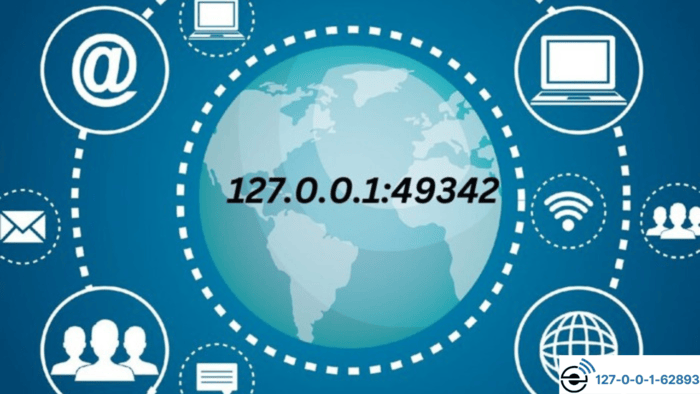Localhost networking is a crucial part of software development. It lets programmers test and troubleshoot applications privately without exposing their work to public networks.
Whether you’re working on a new website, configuring a database, or testing containerized applications, knowing how addresses like 127.0.0.1:49342 work can make your workflow smoother.
This article explains the basics of 127.0.0.1:49342, its role in development, and practical scenarios where it is used.

Breaking Down 127.0.0.1 and Port 49342
To fully understand 127.0.0.1:49342, let’s analyze its two components: the IP address and the port.
| Component | Meaning |
| 127.0.0.1 | Known as the loopback or localhost address, it allows a computer to communicate with itself for local testing. |
| 49342 | This port number is within the ephemeral range (49152-65535), used for temporary, short-term connections. |
The combination of 127.0.0.1 and 49342 ensures that your computer can create an isolated, secure environment for development. We have also created guides and manuals for other combinations of 127.0.0.1 such as 127.0.0.1:57573, 127.0.0.1:7860, etc. which too can be useful to you.
Why 127.0.0.1:49342 Is Useful?
Using 127.0.0.1:49342 provides a safe way to build and test projects locally. It’s beneficial because:
- Communication stays within your device, reducing risks.
- It’s perfect for testing code before releasing it.
- Applications can be debugged without interfering with live systems.
This setup is vital for developers, IT professionals, and those working with secure systems.
Real-Life Scenarios for 127.0.0.1:49342
Here are practical examples of how 127.0.0.1:49342 is applied in day-to-day development:
1. Building Web Applications: Developers use localhost addresses to test sites or APIs using tools like Flask, Node.js, or Django. This ensures the project works before deployment.
2. Database Connections: Connecting to local databases, such as MySQL or SQLite, is often done via localhost for faster testing and better control.
3. Debugging Programs: Isolated testing environments help programmers find and fix bugs without impacting live systems.
4. Running Containers: Platforms like Docker rely on local host addresses to manage container interactions on the same machine.
5. Simulating Devices: Localhost lets developers mimic server responses for testing purposes for mobile or IoT apps.
The Process Behind 127.0.0.1:49342
Here’s a simplified explanation of how 127.0.0.1:49342 works:
- A local server is activated, binding itself to 127.0.0.1 and listening on port 49342.
- Applications like browsers send requests to the local server using this address.
- The server processes these requests and sends the required responses back.
This internal communication keeps everything secure and confined to your computer.
Common Challenges and Solutions
Working with 127.0.0.1:49342 may sometimes present challenges. Here are typical issues and how to address them:
| Issue | Solution |
| Port Already in Use | Select a different port from the ephemeral range (49152-65535). |
| Firewall Restrictions | Update firewall rules to allow traffic through localhost connections. |
| Server Misconfiguration | Double-check that the server is set to listen on 127.0.0.1:49342. |
Tools like netstat, lsof, or curl can help troubleshoot these issues effectively.
Best Practices for Using 127.0.0.1:49342
To ensure smooth development, follow these tips:
- Randomize Ports: Avoid conflicts by using unused ports within the 49152-65535 range.
- Control Firewall Access: Allow localhost traffic while blocking unnecessary external access.
- Encrypt Communication: Use HTTPS locally to prepare for secure deployments.
- Restrict to Local Use: Avoid using localhost configurations in production environments.
- Update Regularly: Keep your development tools current to avoid potential vulnerabilities.
Final Thoughts
127.0.0.1:49342 is a cornerstone of modern development, offering a private, controlled space for creating and refining software.
Developers can optimize their workflows and ensure secure, efficient testing environments by understanding how it works and following best practices.
Whether you’re a beginner or a seasoned programmer, mastering this setup is essential for building reliable applications.
